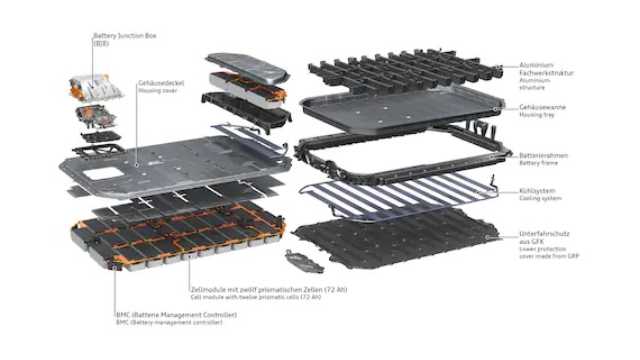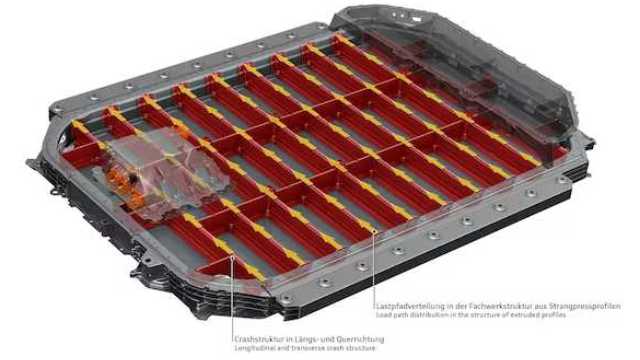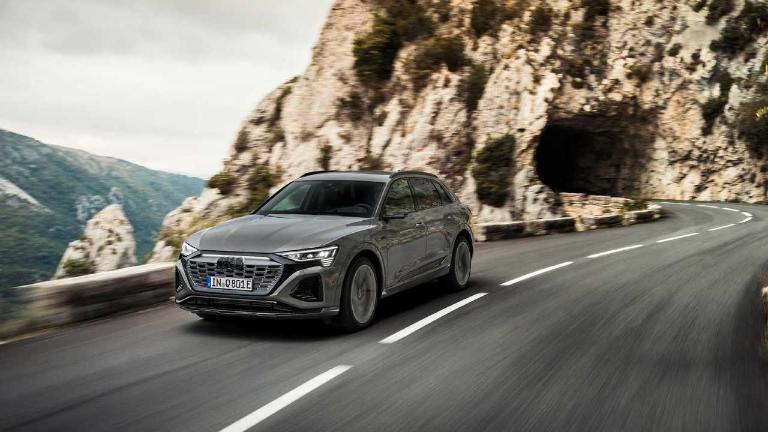Electric cars and safety: what happens in the event of an accident
Are electric cars as safe as those with a combustion engines? Absolutely! Audi engineers and specialists explain why.
Electric cars are becoming increasingly popular and customers are getting better informed. And yet doubts still remain on some topics, also fed by false myths and fake news that continue to circulate. For example, the safety of electric vehicles: what happens to the battery if there is a crash? Is the flow of electricity immediately interrupted? Is the risk of fire greater than in a gasoline or Diesel car?
To clear these doubts, it is enough to look at the results of the Euro NCAP crash tests, the independent organization that evaluates the safety of cars sold in Europe: the Audi Q4 e-tron got five stars in the Euro NCAP crash test, which is the top rating, the same earned in 2019 by Audi e-tron, the first electric model of the Brand.
Euro NCAP
"The criteria for our crash tests are basically the same regardless of the vehicle's engine type, but with electric cars, the inspections carried out after an accident are even more thorough", explains Michiel van Ratingen, Secretary General of Euro NCAP. There is a concern that batteries in electric vehicles can cause a fire if they are seriously damaged, so engineers' work must meet specific requirements regarding energy management, vehicle deformation, and interruption of voltage following impact.
The five stars ratings in the Euro NCAP crash tests are no surprise to Audi, which has always considered safety as one of the primary aspects for its vehicles and has also included this requirement in the Corporate Regulations.
Safety Tradition
As early as 1938, engineers at DKW (one of the brands out of which Audi was later born) were conducting rollover tests on their models - the first crash tests in automotive history - to which they later added reproducible crash tests that took place in a purpose-built facility in the central Auto Union (another of Audi's founding brands) testing department.
"Each of our models meets high internal standards, regardless of drive system. This involves a lot of expertise and hard work, as well as significant computing power. Crash test simulations have become an indispensable part of model development, and our specialists perform thousands of them every year before the first prototype is built", says Thorsten Adolph, expert for front and rear crash safety in the Whole Vehicle Development department.

No compromises
"We go the extra mile to ensure our cars offer very good protection, and we are delighted when we get such good results from independent crash tests", explains Michael Broscheit, Audi consumer protection expert. "Unfortunately, on some issues related to electric cars there is still skepticism among consumers, but safety standards are extremely high. And this applies not only to crash tests, but of course also to the development of individual components, especially battery cells".
On the safety front, the main differences between an electric car and a vehicle with combustion engine are two: "First of all, it is important to safeguard the high-voltage battery in the event of a crash: that's why it is placed in a stable housing that is designed to adequately protect the battery modules from damage even in a heavy collision", explains Sebastian Jäckisch, engineer in Audi's Development team.
No shocks
Audi has been directly assembling battery modules at the Brussels plant for several years now, and the assembly of pre-production batteries for the next generation of electric vehicles is currently underway in Ingolstadt. "Secondly, the risk of electric shock has to be minimized. That's why the high-voltage system is designed to be safe to touch: all live parts are insulated and made inaccessible. And if the airbag is triggered as a result of an accident, the voltage in the high-voltage system is automatically reduced", Jäckisch continues.
Another important factor is the quality of the battery cells. In this regard, Audi can rely on its test center in Gaimersheim, near Ingolstadt, where both individual cells and the battery system as a whole have to pass rigorous and thorough testing. Crash tests and overcharge tests are carried out, while several hundred thousand kilometers are reconstructed on test rigs: this is how Audi works to ensure a high level of possible product safety.

Putting out a fire
But what happens in the event of a fire? Jochen Schäfer, Managing Director of Defensio Ignis, a firm of experts & engineers in the area of fire safety, first aid and occupational safety, and specialist fire service consultant to the German Fire Services Association (DFV), explains.
"Water is and clearly remains the best means of extinguishing a fire. It is available almost everywhere, unlike, for example, firefighting foam that the fire service uses to starve the burning fuel of the necessary oxygen. In the case of an electric car, much more water is needed because after extinguishing the fire, the battery needs to be cooled. Only in this way can there be a guarantee, as far as possible, that other components do not subsequently catch fire again".
In case of an accident
In case of an accident, the rescue procedure "is very similar to the traditional one: the scene and the vehicles involved are secured and the use of tools such as cutters or spreaders is defined. The big difference from combustion engine vehicles is that during rescue operations you have to be sure that you are dealing with the high-voltage system components in the correct way, which are clearly marked; it's not complicated, but in other words you have to be sure not to cut live wires", Schäfer continues.
Each manufacturer issues a rescue data sheet for their vehicles - whether electric or ICE models - that contains a list of detailed information for emergency responders. These guidelines can be found online; in addition, if involved in an accident, modern cars automatically call the international emergency number and also report vehicle details.
Source: AUDI AG
VGI | Responsible OU: VP | Creation date: article date | Class 9.1
